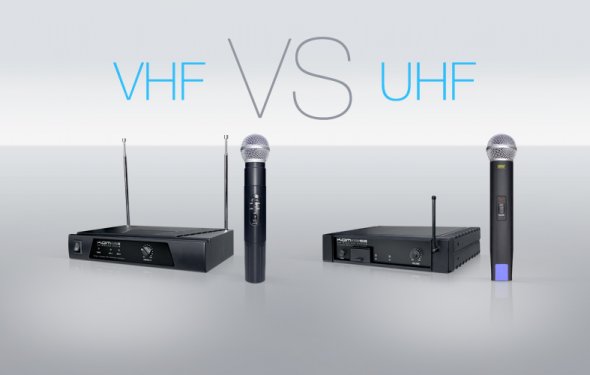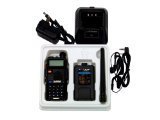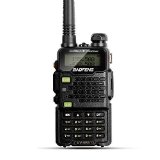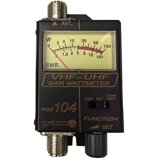UHF and VHF

Every wireless microphone system transmits and gets on a specific radio-frequency, called the operating regularity. Allocation and legislation of radio frequencies is supervised by certain federal government companies in each nation utilizing the result that allowable (appropriate) frequencies and regularity groups change from country to country. In addition to regularity, these government companies typically specify various other areas of the gear itself, including: permitted transmitter energy, maximum deviation, spurious emissions, etc. These requirements vary from one musical organization to another and in one user to a different within confirmed musical organization. For these reasons, it isn't feasible to pick a particular frequency or regularity musical organization which legitimately functional throughout parts of the world. In addition, it isn't possible to create a single style of wireless equipment that will satisfy the specs of most and even most of these companies all over the world.
Use of the radio-frequency bands in the us is controlled by the Federal correspondence Commission (FCC). Certain frequencies within each band are designated to be used by wireless microphones also by other solutions. In the usa, the frequencies used for these systems might grouped into four general groups or ranges: low-band VHF (49-108 MHz), high-band VHF (169-216 MHz), low-band UHF (450-806 MHz) and high-band UHF (900-952 MHz). VHF = "Extremely High Frequency". UHF = "Ultra High Frequency."
The FCC in addition determines who are able to run in each band and who may have concern if more than one user is operating. Primary users include licensed radio/television broadcasters and commercial communications services such as 2-way radio, pagers, and cellular telephones. Cordless microphone system users are often regarded as secondary users. Generally speaking, priority is directed at major people. Additional users cannot interfere with main users, but additional people is subject to disturbance from main users.
Please be aware that while producers needs to be licensed by the FCC to market cordless equipment, it is the responsibility of cordless microphone system operator to see or watch FCC regulations regarding its actual usage.
Explained listed here are the VHF and UHF radio-frequency bands. Each features its own pros and cons for cordless microphone operation, in line with the designated users regarding the musical organization, the real characteristics regarding the musical organization, and regulating restrictions of musical organization.
VHF
At the beginning of the low-band VHF range could be the 49 MHz region. This area can be used not only by inexpensive wireless microphones, but in addition by cordless phones, walkie-talkies, and radio control toys. The 54-72 MHz region is occupied by VHF tv stations 2 - 4. The 72 MHz location can be used by "assistive listening" kind wireless methods. 76 - 88 MHz tend to be assigned to VHF tv stations 5 and 6. Towards the top of the lower band VHF range, 88 - 108 MHz is the commercial radio broadcast musical organization. Most of these regions happen utilized at one time or any other for wireless microphone methods. Allowable deviation limitations (typically up to 15kHz) can accommodate high-fidelity audio. This is basically the exact same deviation for FM radio broadcast. The propagation of these RF waves through environment is very good, as is their ability to pass through many non-metallic substances. This is certainly due to the fairly long wavelength which varies from 9 legs to 20 feet. Probably the most appealing function of operation within the low-band VHF range is low equipment expense.
Excluding assistive hearing methods, low-band VHF just isn't suitable for serious programs. As a result of the large numbers of primary and secondary people, plus large amounts of general radio-frequency (RF) "noise, " this band is susceptible to interference from numerous sources. Transmitter power is limited to significantly less than 50 mW, except in 72-76 MHz range in which to 1 watt is permitted for assistive listening methods. Finally, the minimum proper antenna size for products inside range could be over three foot long (1/4 wavelength), which can severely limit portability and/or performance.
The high-band VHF range is the most popular for professional programs, plus in which quality cordless microphone methods can be obtained at a number of prices. In U.S., the high-band VHF range is divided in to two bands available to wireless microphone users. The very first musical organization, from 169 - 172 MHz, includes eight particular frequencies designated by the FCC for wireless microphone use because of the public. These frequencies in many cases are called "traveling frequencies, " since they can theoretically be used through the entire U.S. without concern for disturbance from broadcast television. Legal restrictions of deviation (up to 12 kHz) allow high quality audio transmission. Power is once more limited to 50 mW. Propagation qualities are great and antenna length is more workable at about 20 inches for a 1/4 wavelength kind.
Unfortunately, the principal users within "traveling" musical organization include numerous business band and federal government functions such forestry, hydro-electric energy channels, additionally the coast-guard. Since the secondary individual category is certainly not restricted, the potential for interference from both primary also additional people is always present. In addition, general RF noise remains fairly strong within band. Due to the limitation of available frequency data transfer, additionally the spacing regarding the recommended eight legal frequencies, it really is only possible to use 2 or 3 products simultaneously on traveling frequencies. These frequencies aren't generally speaking legal outside of the U.S. or Canada.
The larger area of the high-band VHF area is 174-216 MHz. The primary people for this band are VHF television channels 7 - 13. Each occupies 6 MHz of bandwidth: channel 7 (174 - 180 MHz); channel 8 (180 - 186 MHz), etc. again, quality sound can be done within appropriate deviation limits (up to 15 kHz) The 50 mW energy limitation is the same; propagation losings continue to be minimal; and 1/4 wavelength antenna dimensions range down to less than 14 ins.
The alternative of disturbance from other additional users and basic RF noise exists, however it is never as most likely compared to low-band VHF frequencies. In addition, although this range includes the principal people of tv stations 7 - 13, you will find sufficient frequencies offered, in other words., locally unused television stations, in nearly every the main U.S. In some various other countries, the high-band VHF range reaches 230 MHz.
UHF
Just like the VHF region, the UHF area contains a few bands which are utilized for cordless microphone systems. But specific real, regulating, and economic differences between VHF and UHF areas should-be mentioned here. The primary real feature of UHF radio waves is their much shorter wavelength of 12 inches to 24 ins. Probably the most evident consequence of this is actually the much smaller period of antennas for UHF cordless microphone systems. One less obvious effect is reduced radio trend propagation both through air and through other non-metallic products, like wall space and personal systems. This leads to potentially less transmitting range for similar radiated energy. Another consequence is the increased amount of radio wave reflections by smaller steel items, causing comparatively much more frequent and more extreme interference considering multi-path (dropouts). But diversity receivers are very effective inside UHF musical organization in addition to required antenna spacing is minimal.
|
TV Antenna, Vansky Amplified HDTV Antenna 50 Mile Range with Detachable Amplifier Signal Booster for UHF VHF, PowerSupply and 16ft High Performance Coax Cable Speakers (Vansky)
|

|
BaoFeng UV-5R VHF/UHF Dual Band Radio 136-174 400-480Mhz Transceiver Wireless (BaoFeng)
|

|
BaoFeng UV-5R5 5W Dual-Band Two-Way Ham Radio Transceiver UHF/VHF 136-174/400-520MHz Wireless (Baofeng)
|

|
Mediasonic HOMEWORX HDTV Outdoor Antenna - 80 Miles Range Support UHF / VHF (HW-27UV) Home Theater (Major League Global Enterprise LLC)
|

|
Workman 104 SWR / Power Meter for VHF / UHF Ham / CB Radio Automotive Parts and Accessories (WORKMAN)
|